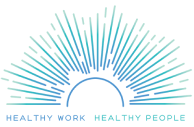As we published our new Medium Article last week Blurred Boundaries: Work-life balance in the time of COVID-19, we received a newly released Stress in America report from the American Psychological Association (APA) on Stress in the Time of COVID-19. Between March 26 and April 4, at the peak of the coronavirus pandemic, a survey of a representative sample of 3,000+ U.S. adults was conducted on behalf of the APA to get a current reading on the levels of stress being experienced by Americans due to the pandemic. The survey shows that Americans are reporting much higher levels of general stress than in previous years.
In our article on work-life balance (or its lack), we discussed how many of us now working from home and managing online learning for our children are feeling the strain of these two roles. Our understanding was confirmed by the APA survey, which showed that parents report significantly higher levels of stress than adults without children. Almost half (46%) of parents say their stress levels are high (between 8 and 10 on a ten-point scale) compared to only 28% of adults without children. More than 7 in 10 parents say that managing online/distance learning for their children is a significant source of stress. And 70% of employed adults say work is a significant source of stress in their lives, up from 64% in the 2019 survey.
The APA warns in this report that “over the long term, the negative mental health effects of the coronavirus will be serious and long-lasting.” As we move forward with the Healthy Work Campaign we have to adapt to the changing nature of work during this pandemic. Almost 56% of Americans are now telecommuting (working from home), so conceptualizing stress must take this new (and possibly continuing) reality into account. We are also reminded that exposure to stress is very different for people who are able to work from home and those who find themselves on the “front-lines” potentially exposed to the virus on a daily basis – grocery store workers, meatpackers, transit workers and health care workers. Work-life balance takes on new meaning for these workers who often have inadequate protections and must contend with the possibility of bringing the infection home to their loved ones.






